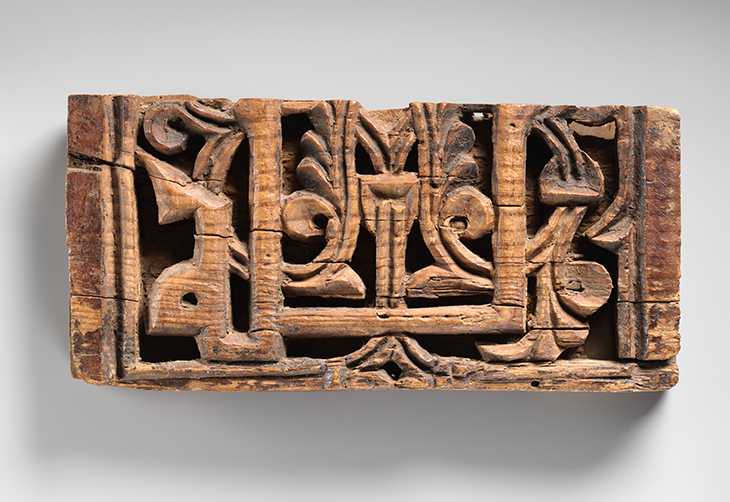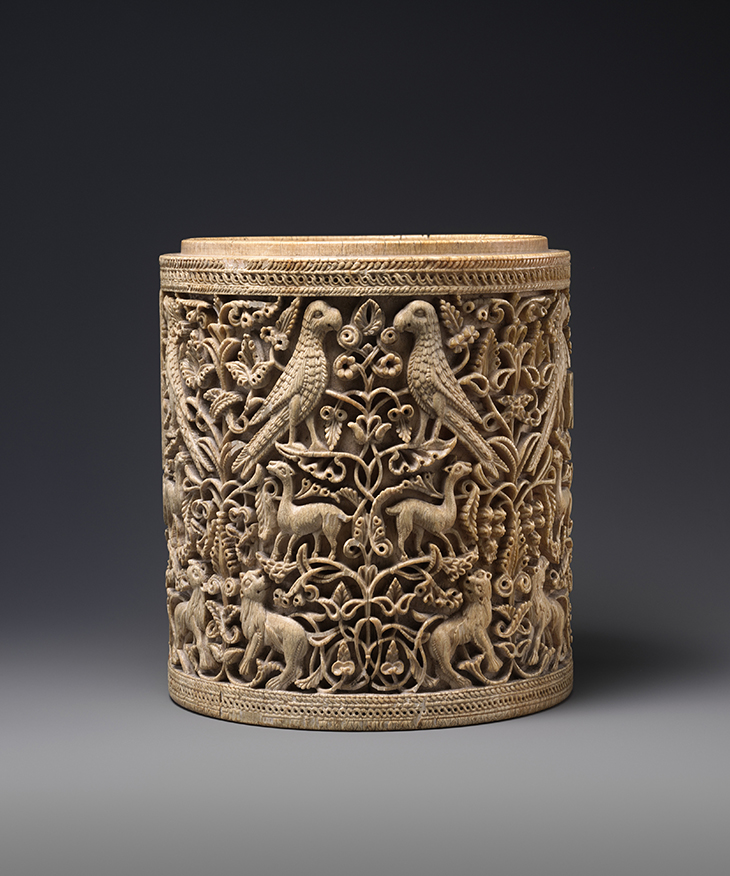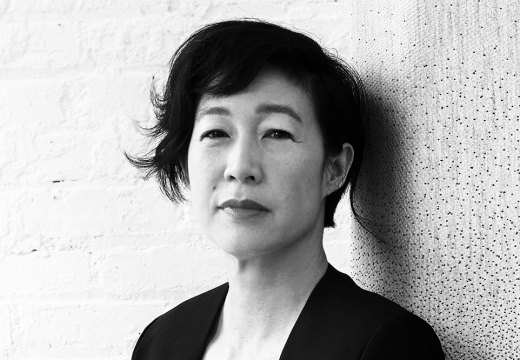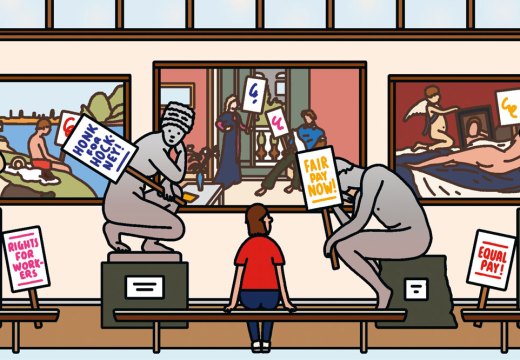With the border between the Christian and Islamic worlds in flux, Spain was home to continual conflict in the Middle Ages – but also to a rich exchange of ideas. This display of silks, ivories, manuscripts and other works – drawn mostly from the collection of the Metropolitan Museum of Art, with a handful of loans from other US museums – explores how artists drew on a variety of visual traditions. The exhibition will be on view in the Met Cloisters’ Fuentidueña Chapel gallery, which has until now focused solely on the Christian tradition (30 August–30 January 2022). Find out more from the Met’s website.
Book cover (?) with Byzantine icon of the Crucifixion; ivory icon made in Constantinople (1000) and setting possibly made in Aragon (late 11th century). Metropolitan Museum of Art, New York

Wood panel with calligraphy (11th century), attributed to Toledo. Metropolitan Museum of Art, New York

Pyxis (c. 950–975), made in Cordoba, Andalusia. Metropolitan Museum of Art, New York

Camel from the Church of San Baudelio de Berlanga (first half 12th century; possibly 1129–34), made in Castile-León, Spain. Metropolitan Museum of Art, New York
Unlimited access from just $16 every 3 months
Subscribe to get unlimited and exclusive access to the top art stories, interviews and exhibition reviews.














![Masterpiece [Re]discovery 2022. Photo: Ben Fisher Photography, courtesy of Masterpiece London](http://www.apollo-magazine.com/wp-content/uploads/2022/07/MPL2022_4263.jpg)
Has the Fitzwilliam lost the hang of things?